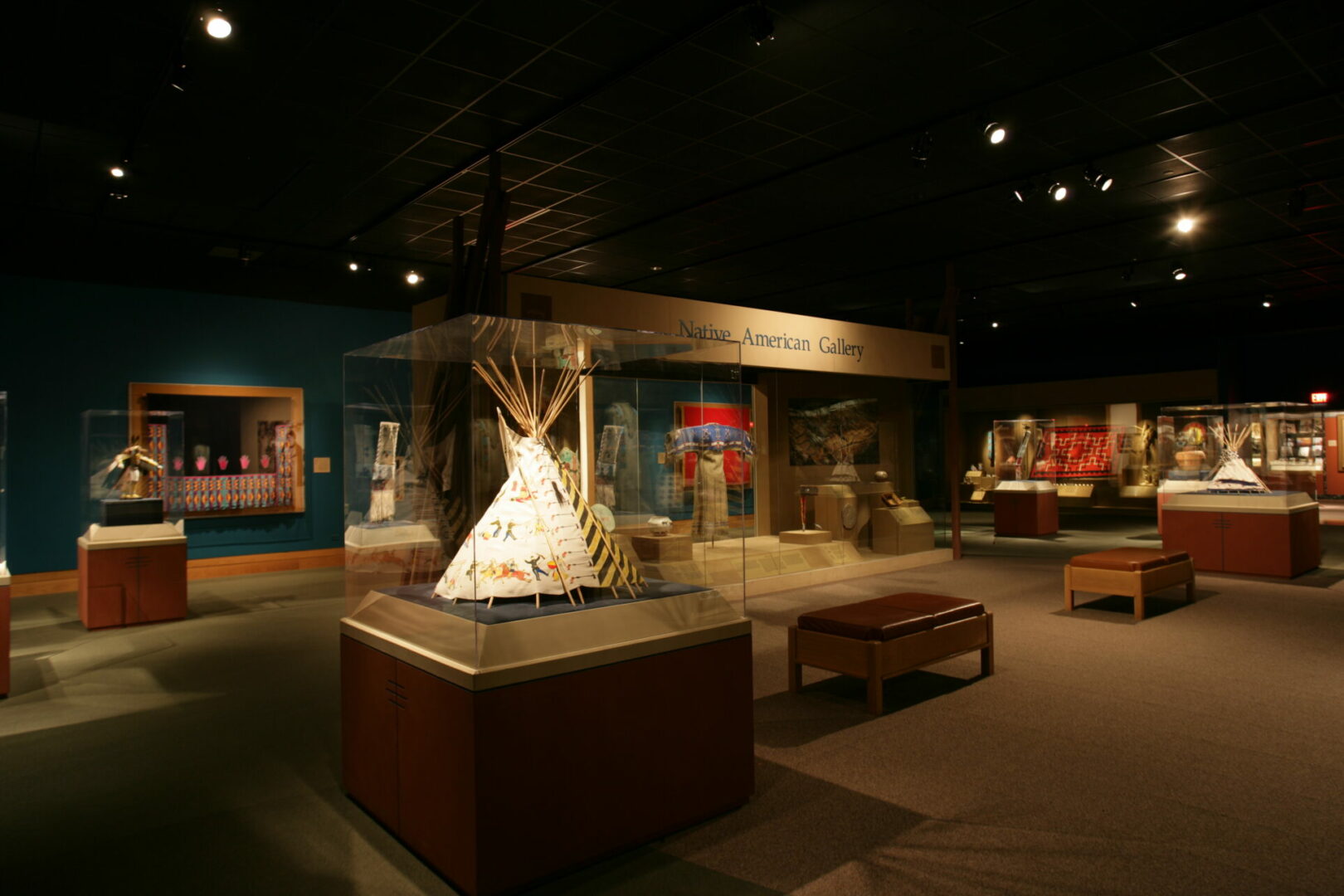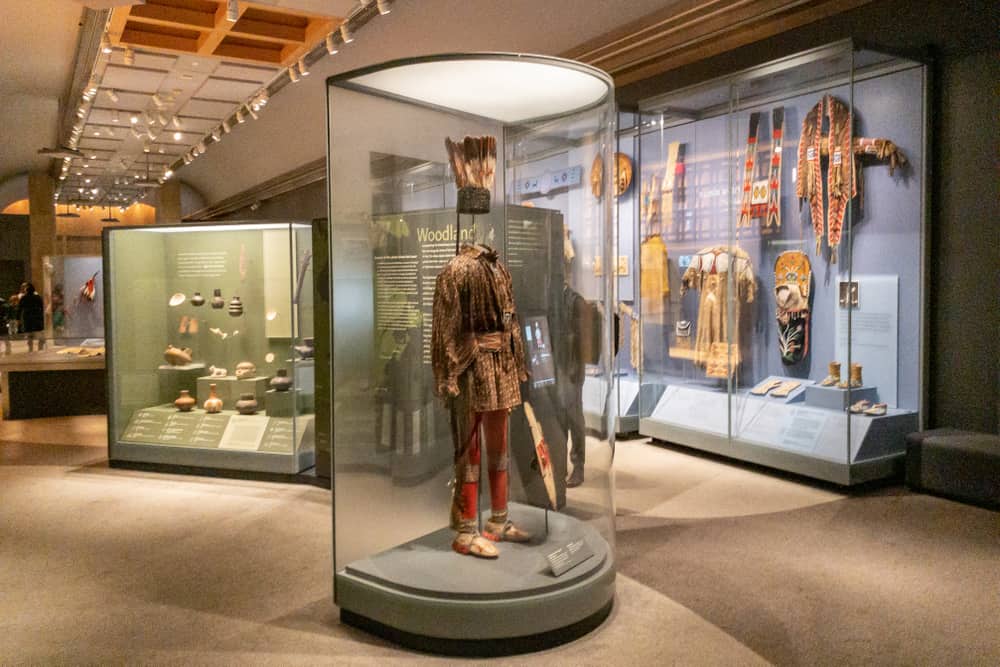
Accessibility Services in Native American Museums: A Comprehensive Overview
Native American museums, encompassing tribal cultural centers, national institutions with significant Indigenous collections, and heritage sites, serve as vital custodians of Indigenous cultures, histories, and contemporary narratives. Their mission extends beyond mere preservation to active interpretation and education, aiming to foster understanding, respect, and connection between diverse audiences and Indigenous peoples. To truly fulfill this mission, these institutions are increasingly recognizing the imperative of comprehensive accessibility services, ensuring that all individuals, regardless of ability, can fully engage with and benefit from their offerings. This article delves into the multifaceted nature of accessibility in Native American museums, exploring foundational principles, specific service categories, and the unique challenges and opportunities inherent in this specialized context.
Foundational Principles of Accessibility
At its core, museum accessibility is predicated on the principles of inclusion, equity, and universal design. In the United States, the legal framework is primarily defined by the Americans with Disabilities Act (ADA), which mandates equal opportunities for individuals with disabilities in all areas of public life, including public accommodations like museums. The ADA serves as a crucial baseline, requiring museums to provide reasonable accommodations to ensure access.
However, many Native American museums strive to move beyond mere compliance to embrace the philosophy of Universal Design. This approach advocates for the creation of environments and products that are usable by all people, to the greatest extent possible, without the need for adaptation or specialized design. In a museum context, this means designing exhibits, programs, and facilities from the outset to be inherently accessible to a broad spectrum of abilities, rather than retrofitting solutions.

Beyond legal and design frameworks, accessibility in Native American museums is deeply rooted in the ethical commitment to inclusion and equity. Indigenous cultures often emphasize community, interconnectedness, and the value of diverse perspectives. Denying access to any segment of the population runs counter to these foundational values, hindering the museum’s ability to serve as a truly inclusive cultural beacon.
Categories of Accessibility Services
Accessibility services in Native American museums can be broadly categorized, addressing various types of disabilities and ensuring a holistic visitor experience.
1. Physical Accessibility
Physical accessibility focuses on enabling individuals with mobility impairments to navigate and interact with the museum environment.
- Mobility Aids: This includes providing ramps, elevators, and wide doorways to accommodate wheelchairs, scooters, and strollers. Accessible restrooms, designated parking spaces, and the availability of loaner wheelchairs are standard provisions.
- Exhibit Layout and Seating: Pathways within exhibits are designed to be wide, clear, and free of obstructions. Exhibit heights are carefully considered to be viewable from various perspectives, including seated positions. Ample and varied seating options are strategically placed throughout galleries and public spaces, allowing visitors to rest and engage with exhibits at their own pace.
- Unique Considerations: Many Native American museums incorporate traditional architectural elements or are located on ancestral lands with varying terrains. Museums often navigate these challenges by offering accessible routes that respect the cultural integrity of the site, sometimes utilizing modern additions that blend harmoniously with traditional aesthetics.

2. Sensory Accessibility
Sensory accessibility addresses the needs of visitors with visual, hearing, and sensory processing impairments.
-
Visual Impairment and Blindness:
- Audio Descriptions: Comprehensive audio guides provide detailed verbal descriptions of visual exhibits, artifacts, and cultural scenes. These can be delivered via handheld devices or integrated into digital platforms.
- Tactile Exhibits: Where culturally appropriate and sanctioned, museums offer tactile models of artifacts, tools, or architectural features, allowing visitors to experience textures and forms through touch. Replicas are often used for sacred or fragile items to ensure preservation and respect.
- Large Print and Braille: Exhibit labels, brochures, and wayfinding signage are available in large print and Braille.
- Guided Tours: Specialized tours led by trained staff or volunteers offer enhanced verbal descriptions and opportunities for tactile engagement.
- Website Accessibility: Museum websites are designed to be compatible with screen readers, ensuring access to online information and resources.
-
Hearing Impairment and Deafness:
- American Sign Language (ASL) Interpretation: ASL interpreters are provided for guided tours, lectures, cultural performances, and special events upon request. Some institutions may also explore interpreters for Indigenous sign languages where relevant and available.
- Closed Captions and Transcripts: All video presentations, audio recordings, and multimedia installations feature closed captions and downloadable transcripts.
- Assistive Listening Devices (ALDs): ALDs, such as induction loops or FM systems, are available for visitors with hearing aids or cochlear implants, enhancing sound clarity in performance spaces and lecture halls.
- Visual Aids: Exhibits emphasize strong visual storytelling through images, graphics, and clear text, complementing auditory information.
- Website Accessibility: Online video content includes captions, and audio content provides transcripts.
-
Sensory Sensitivity (e.g., Autism Spectrum Disorder, PTSD):
- Sensory-Friendly Hours/Spaces: Museums may designate specific "sensory-friendly" hours with reduced lighting, lower sound levels, and fewer crowds. Quiet rooms or designated "cool-down" spaces offer respite from overstimulation.
- Social Stories and Visual Schedules: These tools help prepare visitors for their museum experience by outlining what to expect in a clear, visual format.
- Warning Signs: Exhibits that might feature loud noises, flashing lights, or strong (though culturally significant) scents are clearly marked, allowing visitors to prepare or avoid them.
- Trained Staff: Staff are trained to recognize and respond to the needs of visitors with sensory sensitivities, providing support and understanding.
3. Cognitive and Learning Accessibility
This category focuses on making information digestible and engaging for visitors with cognitive disabilities, learning differences, or those who simply benefit from varied learning styles.
- Clear and Concise Language: Exhibit labels and interpretive materials use plain language, avoiding jargon, and presenting information in easily digestible chunks.
- Multi-Modal Information Delivery: Information is presented through a combination of text, images, audio, and interactive elements to cater to diverse learning preferences.
- Visual Supports: Maps, timelines, diagrams, and clear wayfinding signage aid in orientation and understanding complex narratives.
- Interactive Elements: Hands-on activities and interactive displays provide engaging ways to learn about Indigenous cultures, often aligning with Indigenous pedagogical approaches that emphasize experiential learning.
- Guided Programs: Staff-led tours offer opportunities for simplified explanations, question-and-answer sessions, and personalized engagement.
4. Digital Accessibility
As museums increasingly leverage digital platforms, ensuring accessibility in the virtual realm is paramount.
- Website Compliance: Museum websites adhere to Web Content Accessibility Guidelines (WCAG) standards, ensuring compatibility with screen readers, keyboard navigation, and other assistive technologies.
- Accessible Online Content: Virtual exhibits, digital collections, and educational resources are designed with accessibility in mind, including captioned videos, audio descriptions, and navigable interfaces.
- Virtual Tours: When offered, virtual tours are designed to be accessible, allowing individuals to explore collections and spaces remotely.
5. Programmatic and Cultural Accessibility
This overarching category emphasizes the human and cultural dimensions of accessibility, ensuring services are delivered with sensitivity and respect.
- Staff Training: Comprehensive training for all museum staff (front-line, interpretive, curatorial) is essential. This includes disability awareness, sensitivity training, emergency procedures for individuals with disabilities, and proficiency in operating accessibility equipment. Crucially, training also incorporates cultural competency regarding Indigenous protocols and perspectives.
- Culturally Sensitive Interpretation: This is perhaps the most unique and critical aspect for Native American museums. Accessibility services must be provided in a manner that respects Indigenous spiritual beliefs, cultural protocols, and community values. For example, while tactile experiences are beneficial, they must be carefully balanced with the sanctity of certain artifacts, often leading to the use of replicas for touch-based exhibits. Similarly, interpreting oral histories for various sensory needs requires careful consideration to preserve the nuance and power of traditional storytelling.
- Community Engagement: True accessibility is achieved through active collaboration with Native American communities, particularly those with disabilities. Involving community members in the planning, design, and evaluation of accessibility services ensures that offerings are authentic, relevant, and truly meet the needs of the intended audience.
- Flexibility and Adaptability: Recognizing that disability is diverse and individual needs vary, museums foster a culture of flexibility, ready to provide customized accommodations upon request and continuously adapt services based on visitor feedback.
Challenges and Future Directions
Despite significant progress, Native American museums face unique challenges in fully realizing comprehensive accessibility. Funding limitations, particularly for smaller tribal museums, can impede the implementation of costly upgrades and specialized services. Balancing strict accessibility mandates with the preservation of traditional structures or the adherence to cultural protocols for sacred objects requires careful negotiation and innovative solutions. Furthermore, developing staff expertise in both disability services and the intricacies of diverse Indigenous cultures is an ongoing process.
Looking forward, the commitment to accessibility in Native American museums will continue to evolve. This includes exploring emerging technologies, fostering deeper partnerships with disability advocacy groups and Indigenous communities, and advocating for increased resources. The ultimate goal remains to create spaces where all visitors can not only access information but also deeply connect with the rich, living cultures of Native American peoples, fostering a more inclusive and understanding world.
In conclusion, accessibility services in Native American museums are far more than a legal obligation; they are an ethical imperative and a testament to the institutions’ dedication to their mission. By embracing universal design, offering a wide array of specialized services, and embedding cultural sensitivity into every aspect of their operations, these museums ensure that the invaluable narratives and vibrant heritage of Indigenous peoples are accessible to everyone, enriching lives and promoting cross-cultural dialogue for generations to come.


